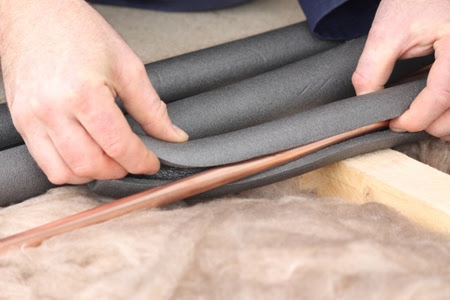Your Place: To Prepare for Winter, Put Pipes First
(MCT)-Someone suggested that I write the annual getting-ready-for-winter column early this year because the last time I did, we had a mild one.

There’s so much to say about winter preparation that it will likely take more than one column, so we’ll start with something from last season that still brings nightmares to many. I’m referring to the ice storm of early February that interrupted electrical service to huge swaths of Philadelphia’s western and northern suburbs for days.
Let’s talk here about how to prevent pipes from freezing and then bursting as the temperature rises.
One of my experts says at the time that while more energy-efficient construction reduces the chance of frozen pipes in newer homes, there are no guarantees.
What you need to do now is locate the water lines that are running along exterior walls or in places where cold air may penetrate, and then do something to protect them.
One way is to insulate the pipes using foam rubber that you can pick up at the hardware store or home center. Make sure you know the diameter of your pipes beforehand, so you don’t waste time and effort.
Just slip the insulation over the pipe, peel the backing strips, then seal it by pressing the adhesive surfaces together.
I use the non-self-stick variety (which is less expensive), fit it around the pipes, and close it up with duct tape.
For added protection, I slip in a half-inch-thick piece of rigid insulation between the pipe and the block basement wall.
To reduce cold-air intrusion, seal any gaps around the house where cold air may penetrate and come into contact with the piping. In severe cold, especially when it’s wind-driven, even a tiny opening can let in enough cold air to cause a pipe to freeze.
Sealing leaks from the outside and from colder areas into warmer ones is perhaps the best way to keep your utility costs down.
There are, I’m sure, many more things you can do to keep your pipes from freezing, but my last recommendation today is to locate the water-shutoff valve to the house and learn how to drain the pipes.
Just be prepared.
2014 The Philadelphia Inquirer Distributed by MCT Information Services
